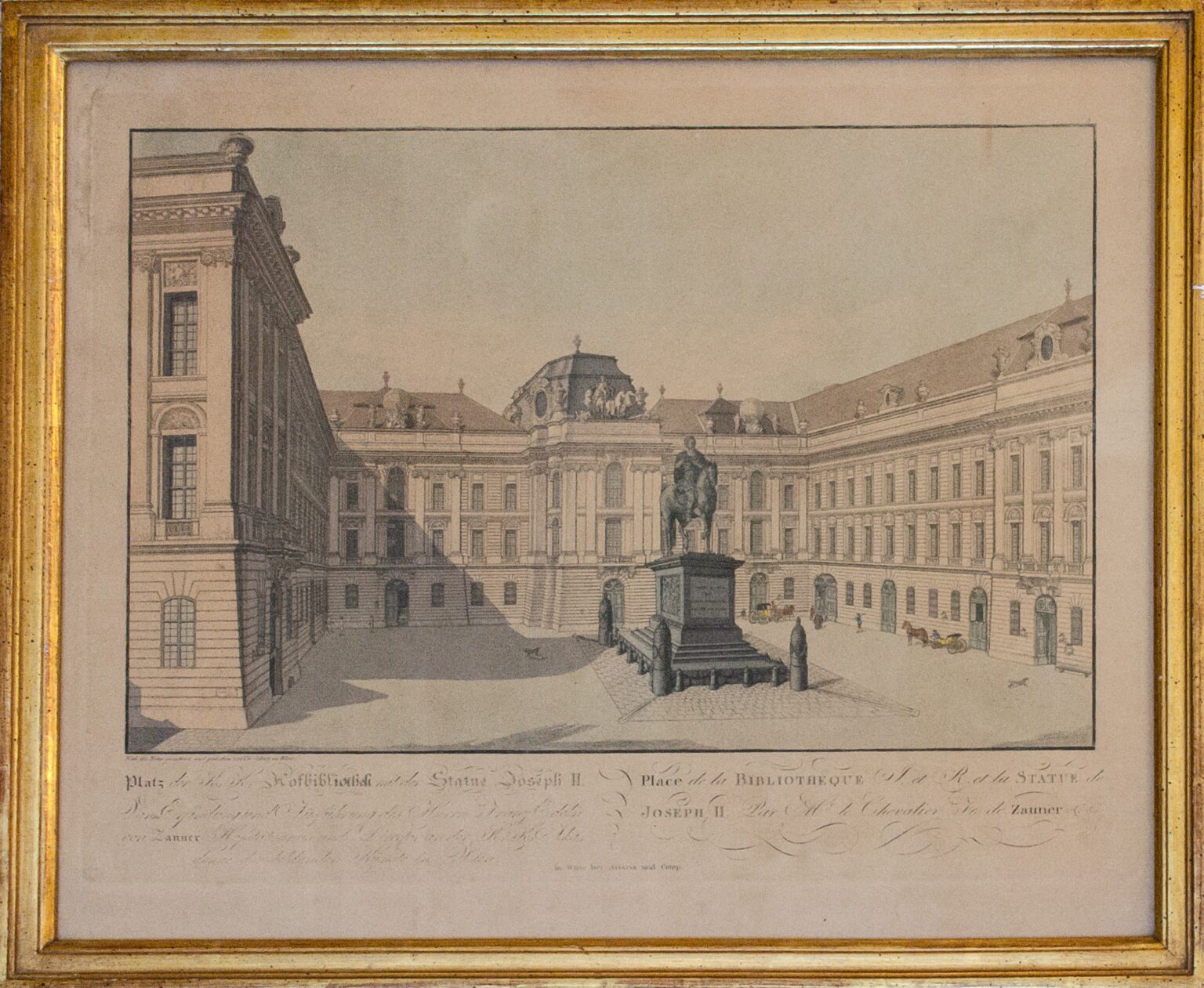
Artist: Carl Schütz
Artist Nationality: Austrian
Artist Dates: 1745-1800
Title: The square of the Imperial Royal Court Library and the monument of Emperor Joseph II (Platz der K. K. Hofbibliothek mit der Statue Joseph II)
Date: c. 1780
Condition: Possible previous restoration to tear, upper left
Medium: Engraving
Dimensions: Framed: 16 ½ x 20 ⅛ x ¾ in.
Estimated Value: $800
Signature/Markings: Inscribed in the plate, lower left of image: “Nach der Natur gezeichnet und gestochen von Ca: Schütz”
This etching depicts the Imperial Court Library in Vienna in the late 18th century.
The Imperial Court Library in Vienna, now known as the Austrian National Library, has a rich history dating back to the 14th century, when the Habsburgs began collecting books and manuscripts. Officially established as the Imperial Library in the 16th century under Emperor Ferdinand I, it grew significantly during the reign of Emperor Charles VI, who commissioned the grand Baroque State Hall in the early 18th century. The library flourished as a center of learning and culture, amassing invaluable collections of rare books, maps, globes, and manuscripts. After the fall of the Austro-Hungarian Empire in 1918, it became a public institution and was renamed the Austrian National Library. Today, it stands as one of the most important libraries in Europe, preserving centuries of knowledge and heritage.
Engraver Carl Schütz entered the Academy at St. Anna on January 3, 1764, and devoted himself to copperplate engraving, in which he soon excelled and quickly developed into one of the most skilled vedutists. He also studied architecture under Johann Ferdinand Hetzendorf von Hohenberg and became a member of the Academy as an architect in 1772. Schütz was one of the most versatile Viennese artists of the 18th century. His oeuvre includes portraits, allegorical depictions, graceful almanac pages, fashion illustrations, ornamental subjects, richly figured military depictions, and battle scenes. However, all of these works take a back seat to his most important work: the Viennese views (created jointly with Johann Ziegler and Laurenz Janscha ) (" Collection of 36 Views of the Residence City of Vienna from its Suburbs and Some Surrounding Places "), in which accurate architectural drawings combine with genre-like grouping and movement of the staffage to create an ideal image. The "Collection of 50 Views of the City of Vienna" was published by Artaria from 1779 onwards and was adapted (in so-called Etats) to the respective topographical and scenic changes (fashion, vehicles) (transition from Baroque to Rococo). Schütz lived from 1778 to 1788 in Josefstadt (8, Lange Gasse 30 and 18, respectively), and from 1798 onwards in the suburb of Laimgrube (the house where he died).
Select Museum Collections:
Kunstbibliothek Berlin, DE
Bratislava City Gallery, Bratislava-Staré Mesto (Slovakia)
Fogg Museum, Harvard University, Cambridge, MA
British Museum, London, EN
RISD Museum, Providence, RI
Vienna Museum, Vienna, AT (another edition of the present work in this collection)
National Gallery of Art, Washington, D.C.
Davis Museum at Wellesley College, Wellesley, MA
Provenance:
Private New York Collection
Exhibition History:
Publication History: